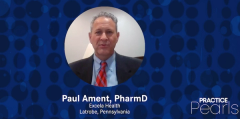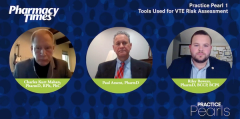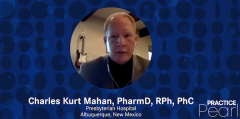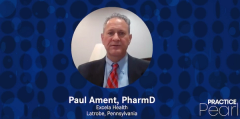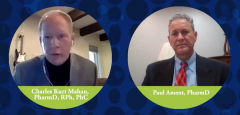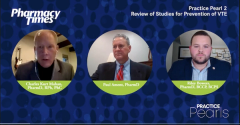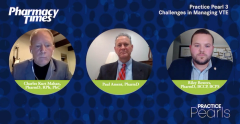
Practice Pearl 2: Risks and Benefits of the Role of DOACs for Prevention of VTE
A panel of experts discuss the risks vs benefits of prophylactic care for patients to prevent VTE.
Episodes in this series

A panel of experts discuss the risks vs benefits of prophylactic care for patients to prevent VTE.
Charles Kurt Mahan, PharmD, RPh, PhC: Let’s shift a little to talk about risks and benefits of extended prophylaxis and the role of our agents. Betrixaban was FDA approved, but it’s not being manufactured, so that leaves rivaroxaban. When do you recommend these DOACs [direct oral anticoagulants]? I know Dr Ament touched on this, but speak to personal experience with prevention and extended thromboprophylaxis. To remind everyone, it’s a shorter course: usually 31 to 39 days.
This isn’t an atrial fibrillation all the time. The patient is always going to be on it, so that’s also something cost-wise that should be taken into consideration. In addition, there are programs available where 340B pricing is very minimal, and some companies have been offering drugs for free postdischarge, especially with the coronavirus pandemic. Could you touch on those?
Riley Bowers, PharmD, BCCP, BCPS: When we’re talking about risk vs benefit, the risk is obviously the worry for bleeding. But in clinical practice, we can often get so hung up on the bleeding risk and the bleeding occurrence rates that we don’t think about what’s going to cause the most disability in our patients. Is it that minor or even major bleed, or is it a recurrent VTE [venous thromboembolism] or even stroke? Sometimes, the higher-percentage risk of bleeding may not outweigh the risk and the disability cost to the patient by having a recurrent VTE.
That goes back to the education component as far as the benefits. It is probable that part of the reason there are no guidelines promoting extended VTE prophylaxis is because the trial data are not the cleanest in the world. You could take a look at the subsets of the MAGELLAN study—and the MARINER study especially—and come to a hypothesis that your high-risk patients, older patients and immobile patients with disease-state risk factors like heart failure could benefit the most from preventing recurrence.
With no gold standard tool and no gold standard high-risk patient, it’s hard to pick an exact patient. It may be different from provider to provider, whom you see as the highest-risk patients. Right now, the data are pretty limited as far as the clear benefit, but those are some of the risk factors that I look for before I recommend using extended prophylaxis.
Paul Ament, PharmD: It’s also interesting that, when you look at some of the subgroup analyses in the MAGELLAN study, there was even a lower incidence of fatal pulmonary emboli in the rivaroxaban arm compared with enoxaparin. Enoxaparin has been the gold standard for many years, and for some subsets to show superiority speaks volumes. The oral opportunity and the patient convenience are important, and as Dr Mahan mentioned, the company is offering a 39-day free trial. It is hard to beat that because cost becomes an issue too where clinicians are worried about the cost and coverage gap, or doughnut hole, the patients are in at this time of the year as well.
Riley Bowers, PharmD, BCCP, BCPS: Cost is absolutely an issue. We [at Campbell University] are in a low-income area, but as the coordination of care improves and as the manufacturing companies help promote these care path programs, if you have good transitions of care pharmacists and medication
assistance programs, we’re usually able to get our patients on a DOAC with a bit of work. It may sometimes be easier to get the patient on a DOAC than on outpatient low molecular weight heparin.
Charles Kurt Mahan, PharmD, RPh, PhC: We’ve touched on it, but for the patients who have had prior VTE, that was 1 of the most overlooked risk factors in some earlier studies for patients who got a subsequent VTE, and we didn’t prophylax appropriately. These are great points. We need to identify the highest-risk patients: Those who are going to be immobile or on the couch. COVID-19 is [coronavirus disease 2019] a great example. There have been many cases of patients coming back in with pulmonary embolism, massive DVT [deep vein thrombosis], and unfortunately many fatal pulmonary embolisms because they weren’t prophylaxed. Many of those patients are not going to be mobile for some time, and there are long lasting effects.
Newsletter
Stay informed on drug updates, treatment guidelines, and pharmacy practice trends—subscribe to Pharmacy Times for weekly clinical insights.



